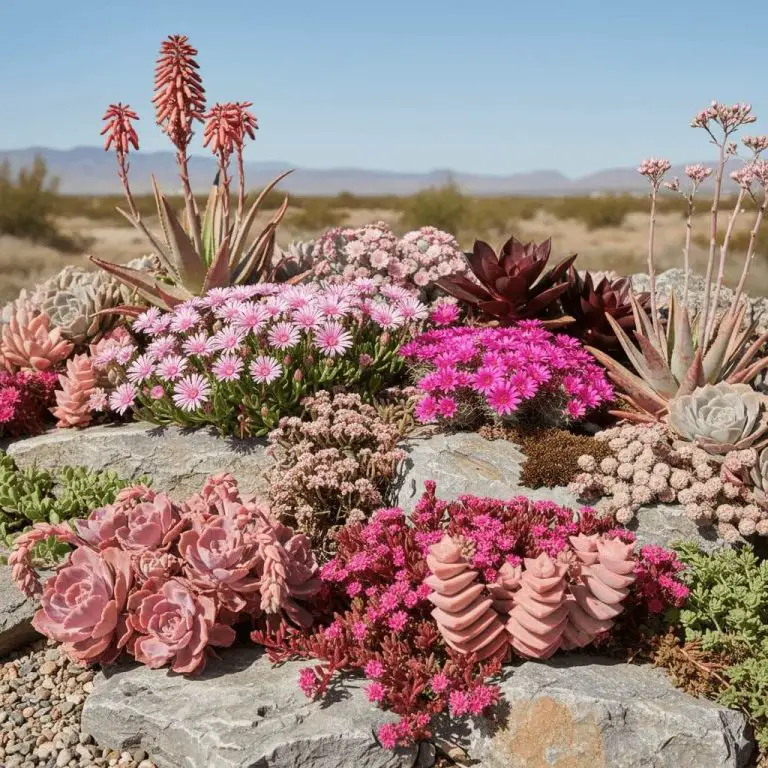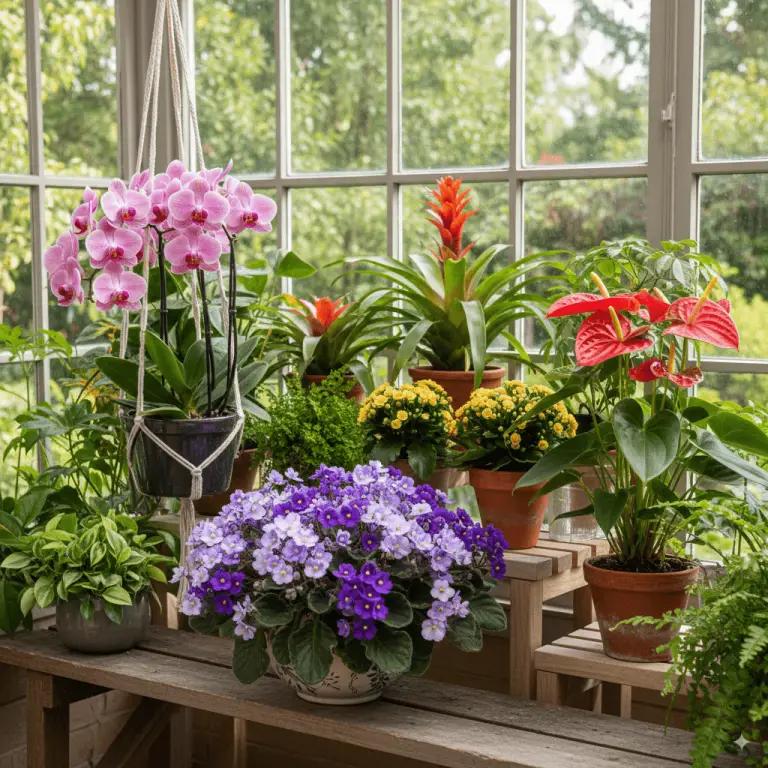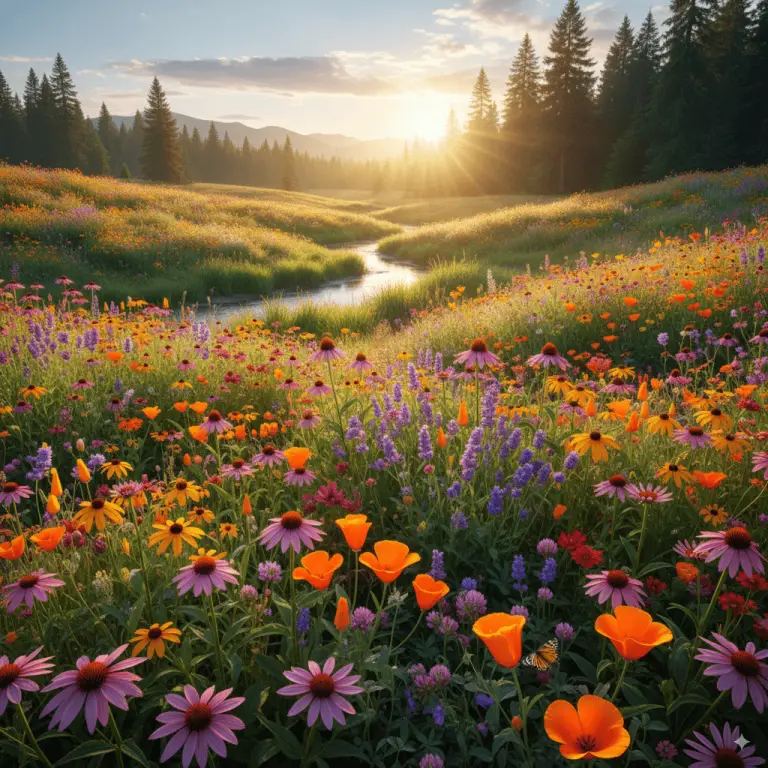Perennial White Flowering Plants: Your Guide To Year-Round Garden
There’s something universally calming about a garden filled with crisp, elegant white blooms. But the thought of creating that timeless look can sometimes feel a bit daunting, right? You might worry about which plants will survive the winter, what will look good together, or how to keep them thriving year after year.
I’m here to promise you that creating a stunning garden oasis is not only possible but also incredibly rewarding. The secret lies in choosing the right perennial white flowering plants—the hardworking backbone of any low-maintenance, beautiful garden. They come back every year, getting bigger and better with time.
In this complete guide, we’ll walk through everything together, just like friends chatting over the garden fence. We’ll explore the absolute best white perennials for any situation, share a simple care guide to ensure they flourish, and even tackle a few common problems. Let’s dig in and create the serene garden of your dreams!
What's On the Page
- 1 Why Choose Perennial White Flowering Plants? The Unsung Heroes of Your Garden
- 2 Our Top 10 Perennial White Flowering Plants for Every Garden
- 3 The Ultimate Perennial White Flowering Plants Care Guide
- 4 Solving Common Problems with Perennial White Flowering Plants
- 5 Frequently Asked Questions About Perennial White Flowering Plants
- 6 Your Serene White Garden Awaits
Why Choose Perennial White Flowering Plants? The Unsung Heroes of Your Garden
Before we jump into our favorite varieties, let’s talk about why a garden rich with white perennials is such a brilliant idea. The benefits of perennial white flowering plants go far beyond just looking pretty—they are strategic, versatile, and wonderfully practical.
First, they bring a sense of elegance and peace to any space. A white garden feels sophisticated and clean, creating a tranquil retreat where you can unwind. White flowers act as a visual “cooler” on hot summer days and have the magical ability to practically glow in the twilight, making them perfect for a moon garden you can enjoy after the sun goes down.

🌿 The Companion Planting & Gardening Book (eBook)
Bigger harvests, fewer pests — natural pairings & simple layouts. $6.99
Get – $6.99
🪴 The Pest-Free Indoor Garden (eBook)
DIY sprays & soil tips for bug-free houseplants. $4.89
Get – $4.99They are also the ultimate team players. White blooms complement every other color in the garden. They can soften bold reds and oranges or bridge the gap between clashing pinks and purples, creating a cohesive, harmonious look.
From a practical standpoint, choosing perennials is a fantastic move for sustainable perennial white flowering plants. Because they return each year, you’re not buying and planting new annuals every season. This saves money, reduces waste, and is an eco-friendly perennial white flowering plants practice. Their established root systems also improve soil structure and require less water over time. It’s a win for you and a win for the planet!
Our Top 10 Perennial White Flowering Plants for Every Garden
Ready to meet the stars of the show? This list is a collection of my tried-and-true favorites that are reliable, beautiful, and perfect for both new and experienced gardeners. Don’t worry—these flowers are perfect for beginners!
Shasta Daisy (Leucanthemum × superbum): The Classic Sunshine Flower
You simply can’t go wrong with the cheerful, classic look of a Shasta Daisy. Their bright white petals and sunny yellow centers scream “summer.” They are incredibly easy to grow and make for fantastic cut flowers.
- Sun: Full Sun
- Soil: Well-drained
- Blooms: Early summer to fall
- Pro Tip: Look for varieties like ‘Becky’ for extra-long bloom times and sturdy stems that don’t flop.
White Coneflower (Echinacea purpurea ‘Alba’): A Pollinator’s Paradise
While purple coneflower gets a lot of love, its white counterpart is just as stunning. The unique, shuttlecock-like blooms are a magnet for bees and butterflies. Plus, they are drought-tolerant once established, making them a very low-maintenance choice.
- Sun: Full Sun to Part Shade
- Soil: Adaptable, but prefers well-drained
- Blooms: Mid-summer to fall
Phlox (Phlox paniculata ‘David’): The Fragrant Summer Staple
If you want fragrance, you want Phlox ‘David’. On a warm summer evening, its sweet scent is absolutely intoxicating. The large clusters of pure white flowers are showstoppers. It’s also famously resistant to powdery mildew, a common issue with other phlox varieties.
- Sun: Full Sun
- Soil: Moist, rich soil
- Blooms: Mid to late summer
Astilbe (Astilbe ‘Deutschland’): For That Shady, Magical Corner
Have a shady spot where nothing seems to grow? Astilbe is your answer. Its feathery, plume-like flowers bring texture and light to darker corners of the garden. They love moisture, so they’re perfect for areas near a downspout or in naturally damp soil.
- Sun: Part Shade to Full Shade
- Soil: Consistently moist
- Blooms: Early to mid-summer
Peony (Paeonia ‘Festiva Maxima’): The Romantic Showstopper
Everyone deserves a peony in their garden. ‘Festiva Maxima’ is a classic heirloom variety with huge, fragrant double blooms of pure white, often with a few crimson flecks near the center. They are incredibly long-lived plants that will reward you for decades.
- Sun: Full Sun
- Soil: Well-drained, rich soil
- Blooms: Late spring to early summer
- Pro Tip: Don’t plant the root too deep! The “eyes” (growth buds) should be no more than 2 inches below the soil surface.
Candytuft (Iberis sempervirens): The Perfect Groundcover
For a carpet of snow-white flowers in the spring, look no further than Candytuft. This low-growing, spreading perennial is perfect for cascading over rock walls, edging a border, or filling in gaps. It’s an evergreen, so its dark green foliage looks great year-round.
- Sun: Full Sun
- Soil: Excellent drainage is a must!
- Blooms: Mid to late spring
White Bleeding Heart (Dicentra spectabilis ‘Alba’): Unique Charm for Shade
The heart-shaped lockets of a Bleeding Heart are truly unique. The white version, ‘Alba’, offers an elegant and refined look for the shade garden. It pairs beautifully with ferns and hostas, creating a lush, woodland feel.
- Sun: Part Shade to Full Shade
- Soil: Moist, well-drained
- Blooms: Spring
Japanese Anemone (Anemone hupehensis): Graceful Late-Season Blooms
Just when other flowers are starting to fade, the Japanese Anemone steps up. Its tall, wiry stems topped with simple, elegant white flowers dance in the autumn breeze. They bring a welcome burst of life to the late-season garden.
- Sun: Full Sun to Part Shade
- Soil: Rich, moist soil
- Blooms: Late summer to fall
Hosta (Hosta ‘Francee’): Elegant Foliage with Dainty Blooms
While primarily grown for its stunning foliage, don’t forget that hostas also flower! Varieties like ‘Francee’ have beautiful green leaves edged in white, but they also send up tall scapes of delicate, bell-shaped white or lavender-white flowers in the summer that are beloved by hummingbirds.
- Sun: Part Shade to Full Shade
- Soil: Moist, rich soil
- Blooms: Mid-summer
Lily of the Valley (Convallaria majalis): A Sweetly Scented Carpet
For an incredibly fragrant and tough-as-nails groundcover for shade, Lily of the Valley is a classic choice. The tiny, bell-shaped white flowers pack an enormous, sweet perfume in the spring. A quick note of caution: All parts of this plant are toxic if ingested, so be mindful with pets and small children.
- Sun: Full Shade to Part Shade
- Soil: Adaptable, but prefers moist conditions
- Blooms: Spring
The Ultimate Perennial White Flowering Plants Care Guide
One of the best things about perennials is that they are generally low-maintenance. However, following a few perennial white flowering plants best practices will ensure they look their absolute best. This is our simple perennial white flowering plants care guide to guarantee success.
Getting the Soil Just Right
Healthy plants start with healthy soil. Most perennials thrive in soil that is rich in organic matter and drains well. Before planting, it’s a great idea to amend your garden bed with a few inches of compost. This improves soil structure, adds nutrients, and helps retain moisture.
Planting for Success: A Step-by-Step Guide
Here’s how to perennial white flowering plants get established correctly. It’s easy!
- Dig a hole that is twice as wide as the plant’s root ball but just as deep.
- Gently loosen the roots at the bottom of the plant if they are tightly bound.
- Place the plant in the hole, ensuring the top of the root ball is level with the surrounding soil.
- Backfill the hole with soil, gently tamping it down to remove air pockets.
- Water deeply and thoroughly right after planting to help the roots settle in.
Watering Wisely
For the first year, your new perennials will need consistent watering to establish a strong root system. A good rule of thumb is to water deeply once or twice a week rather than a little bit every day. Deep watering encourages roots to grow downward, making the plant more drought-tolerant in the long run.
The Art of Deadheading and Pruning
Deadheading is simply the process of removing spent flowers. For plants like Shasta Daisies and Coneflowers, this little chore encourages the plant to produce more blooms instead of putting its energy into making seeds. It also keeps the garden looking tidy and prevents browning flowers from spoiling the crisp white aesthetic.
Solving Common Problems with Perennial White Flowering Plants
Even the most experienced gardeners run into issues now and then. Don’t worry! Here are some solutions to common problems with perennial white flowering plants.
Dealing with Pests and Diseases
Powdery mildew, a white, dusty-looking fungus, can sometimes appear on plants like Phlox, especially in humid weather. The best defense is good air circulation. Don’t overcrowd your plants! If you see it, you can treat it with an organic fungicide or a simple spray of one tablespoon of baking soda and a half-teaspoon of liquid soap in a gallon of water.
Why Aren’t My Perennials Blooming?
This is a frustrating one! The most common culprit is not enough sun. Most flowering perennials need at least six hours of direct sunlight to produce abundant blooms. Other reasons could be too much nitrogen fertilizer (which promotes leafy growth at the expense of flowers) or the plant has become overcrowded and needs to be divided.
Leggy Growth or Flopping Stems
If your plants are getting tall and floppy, it could be a sign of too much shade or overly rich soil. For plants like Phlox and Asters, you can perform the “Chelsea Chop” in late spring—cutting the plant back by about a third. This encourages a sturdier, bushier plant that will bloom slightly later but won’t need staking.
Frequently Asked Questions About Perennial White Flowering Plants
Which white perennials bloom all summer?
For a long season of color, look for varieties like Shasta Daisy ‘Becky’, Phlox ‘David’, and White Coneflower. With consistent deadheading, these garden workhorses can provide beautiful white blooms from early summer right into the fall.
Are there any evergreen perennial white flowering plants?
Yes! Candytuft (Iberis sempervirens) is a fantastic choice that keeps its deep green foliage all winter long. Another great option for shade is the Hellebore, or Lenten Rose (Helleborus orientalis), which blooms in late winter or very early spring with beautiful, long-lasting white flowers.
What are the best white perennials for full sun?
If you have a sunny spot, you have tons of options! Shasta Daisies, White Coneflower, Peonies, Phlox, and Candytuft all thrive in at least six hours of direct sun and will reward you with the most prolific blooms in these conditions.
Your Serene White Garden Awaits
We’ve covered a lot, from the amazing benefits of a white perennial garden to our top plant picks and a simple care guide. Remember, gardening is a journey, not a destination. It’s about experimenting, learning, and enjoying the simple pleasure of watching something grow.
The beauty of using perennial white flowering plants is that your garden will evolve and mature with you, becoming more beautiful each passing year. You have all the knowledge you need to create a peaceful, elegant, and sustainable garden sanctuary.
Now, the best part begins. Take these ideas, head to your local nursery, and start planting. Your beautiful white garden is waiting for you. Happy gardening!
- African Daisy Container Ideas: Your Pro Guide To Dazzling Patio Pots - October 14, 2025
- How To Collect African Daisy Seeds For An Endless Summer Of Color - October 14, 2025
- African Daisy Blue Eyed Beauty Care – Your Ultimate Guide To Vibrant, - October 14, 2025



